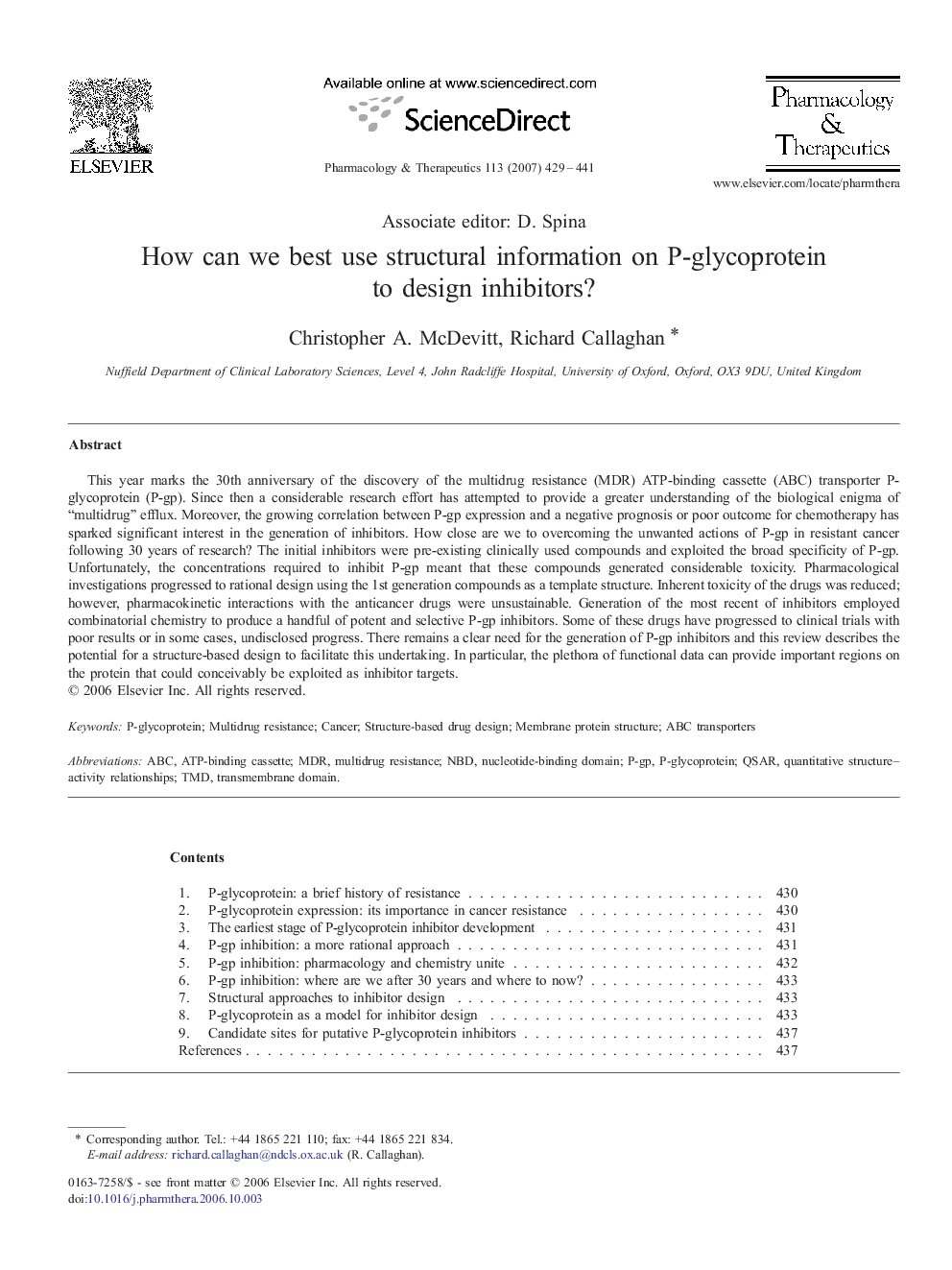| Article ID | Journal | Published Year | Pages | File Type |
|---|---|---|---|---|
| 2564233 | Pharmacology & Therapeutics | 2007 | 13 Pages |
This year marks the 30th anniversary of the discovery of the multidrug resistance (MDR) ATP-binding cassette (ABC) transporter P-glycoprotein (P-gp). Since then a considerable research effort has attempted to provide a greater understanding of the biological enigma of “multidrug” efflux. Moreover, the growing correlation between P-gp expression and a negative prognosis or poor outcome for chemotherapy has sparked significant interest in the generation of inhibitors. How close are we to overcoming the unwanted actions of P-gp in resistant cancer following 30 years of research? The initial inhibitors were pre-existing clinically used compounds and exploited the broad specificity of P-gp. Unfortunately, the concentrations required to inhibit P-gp meant that these compounds generated considerable toxicity. Pharmacological investigations progressed to rational design using the 1st generation compounds as a template structure. Inherent toxicity of the drugs was reduced; however, pharmacokinetic interactions with the anticancer drugs were unsustainable. Generation of the most recent of inhibitors employed combinatorial chemistry to produce a handful of potent and selective P-gp inhibitors. Some of these drugs have progressed to clinical trials with poor results or in some cases, undisclosed progress. There remains a clear need for the generation of P-gp inhibitors and this review describes the potential for a structure-based design to facilitate this undertaking. In particular, the plethora of functional data can provide important regions on the protein that could conceivably be exploited as inhibitor targets.
